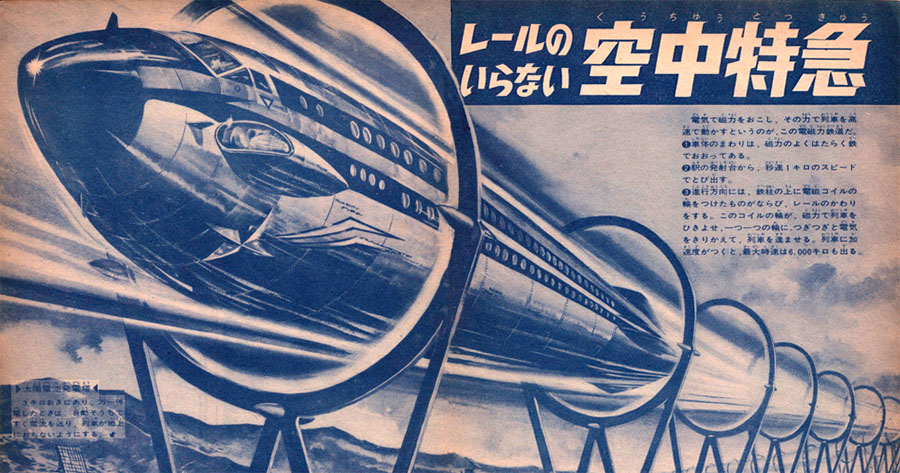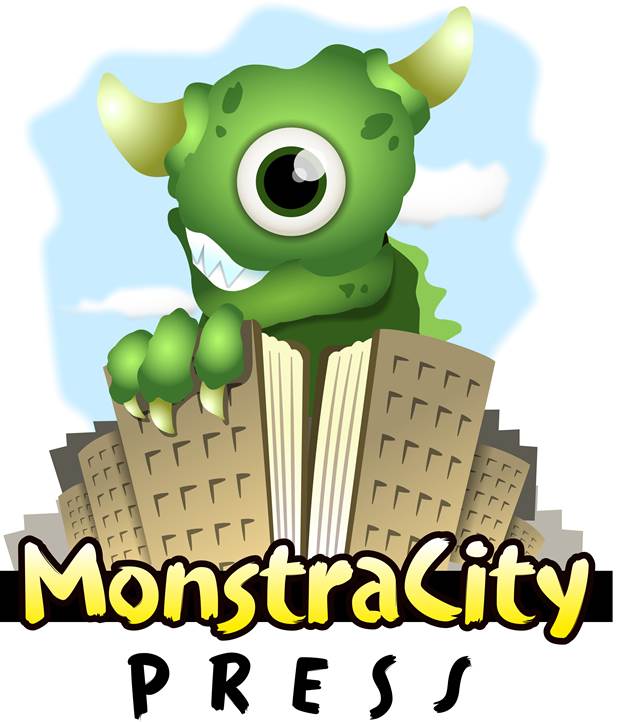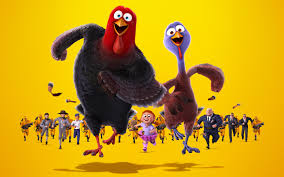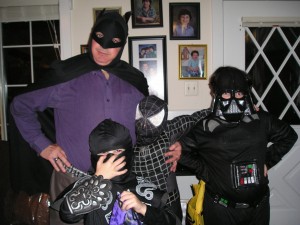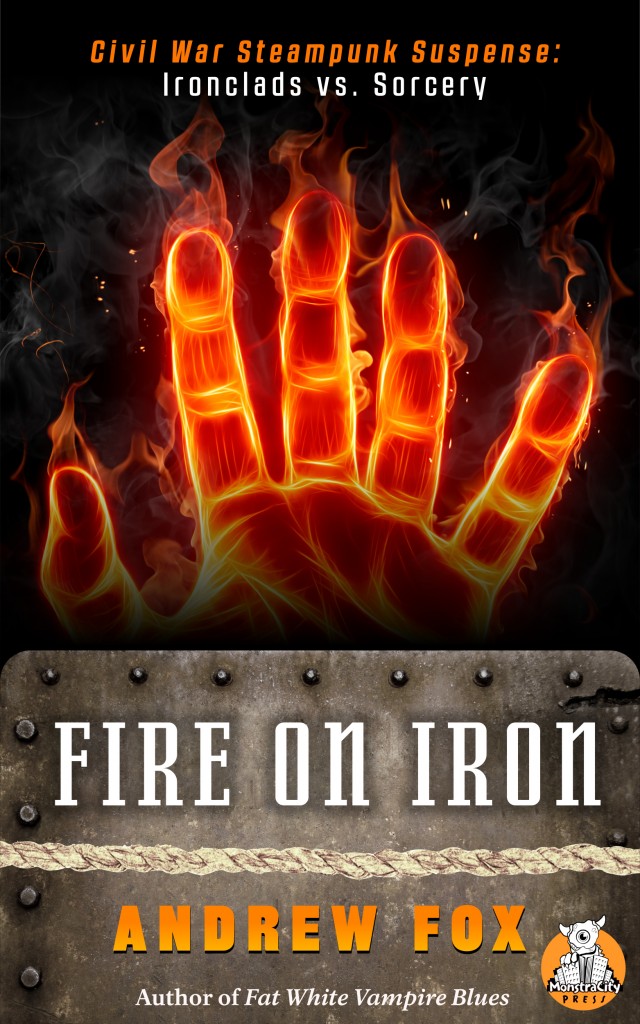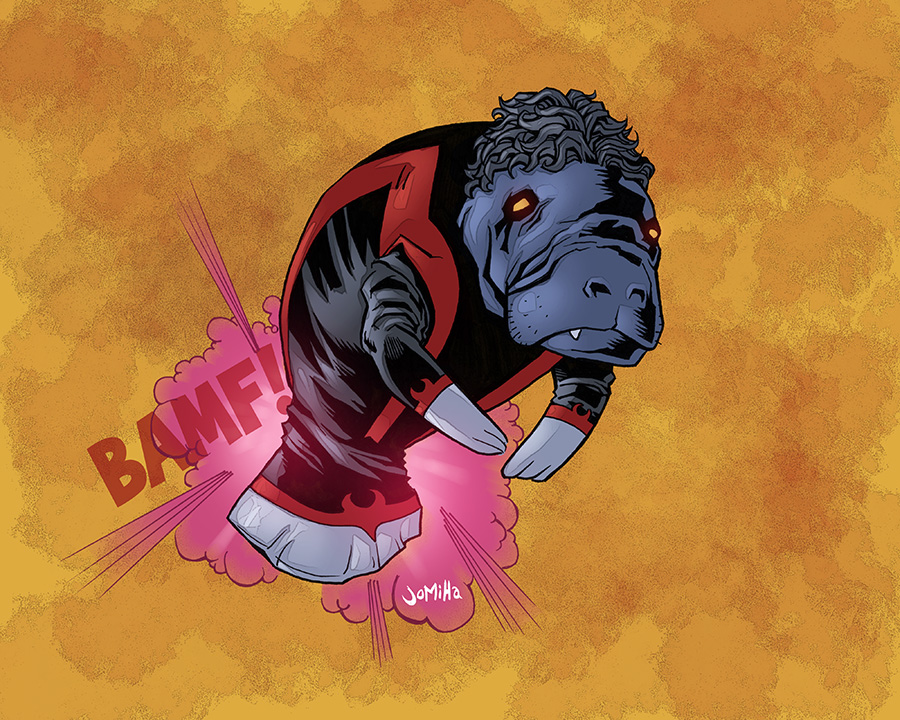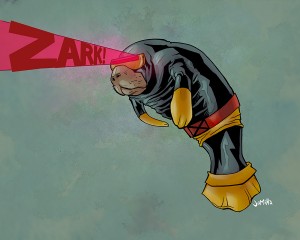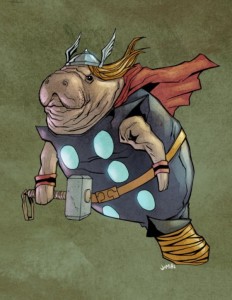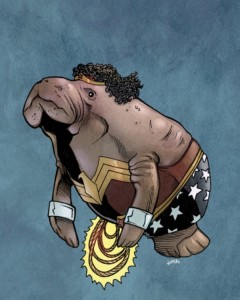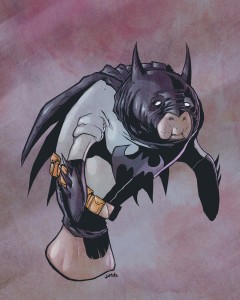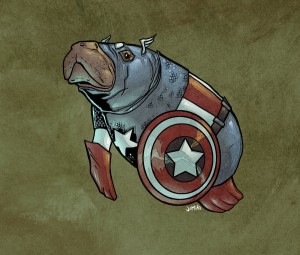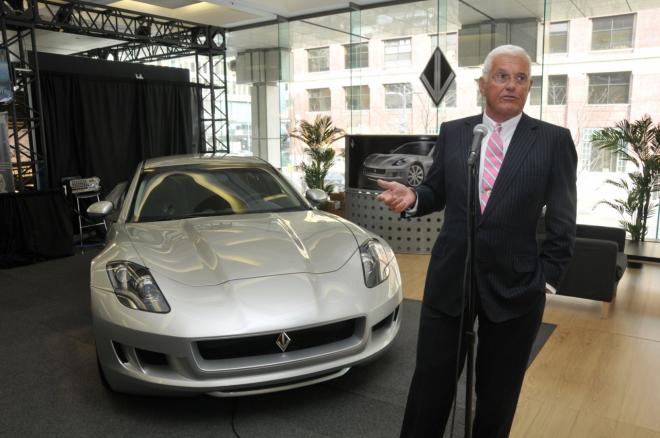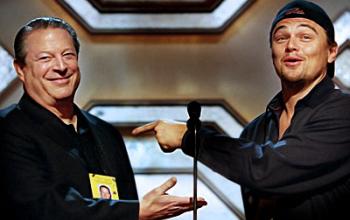
…during this supposed nationwide economic downturn. This morning, while walking from my Virginia Railway Express station at L’Enfant Station to my office, an eight-block walk away, I saw two BMW x5 sport utility vehicles turn onto Avenue D simultaneously, a silver one in one turn lane and a purple one in the other turn lane. Right next to each other. I realize this isn’t as extraordinary as seeing, say, two Ferraris driving side by side. Still, what are the chances of seeing two such luxury sport utility vehicles side by side, apart from at a BMW dealership (or maybe Beverly Hills)? And mind you, I’m talking Southwest Washington, DC, a quadrant of governmental agency headquarters, not an enclave of multi-millionaire movie stars. Hey, I’m not cashing in during this Gold Rush. When I’m not riding the train, I’m driving a Kia Rondo.
Archive for Andrew
Washington, DC Must Be Doing All Right
Super-Sized Showa Era Sadness (the Way the Future Once Looked)
These retro-futuristic images from Japanese magazines struck a chord in me. They raised emotions in my breast (bemused sadness and nostalgic longing) which are probably the precise opposite of the emotions their artists, either in the halcyon days of pre-WW 2 Japan or in the wildly optimistic and forward-looking Japan of the early 1960s, intended to inspire when they originally created these images (I imagine the artists, if they had any goal at all aside from cashing a paycheck, wanted to elicit feelings of awe and happy anticipation at the marvels the future would bring).
I think the reason these images inspire bemused sadness and nostalgic longing in me is that they were originally published, not in the pages of Japanese science fiction magazines, but in the Japanese equivalent of our American magazine Popular Mechanics, which meant that these gigantic, awe-inspiring machines were fanciful or fantastical versions of machines which were thought to be (someday) practical and buildable. Suffice to say, Japan never saw propeller driven trains like these envisioned in 1936 (this one’s my favorite in this little selection; just take a gander at those fabulous passengers you can see through the windows!):
Or a super ocean liner which, when in distress, could launch self-contained life boat cruisers from a sea-level launching platform (I wonder whether or not the artist had any notion that just a few years after he would pen this drawing, the U.S. submarine fleet would be sending the majority of the Japanese merchant fleet to the bottom of the Pacific; probably not):
Or an Arctic exploration vehicle which carries its own biplane (and all with US markings, too, a rather remarkable detail from a drawing published in a late 1930s Japanese popular magazine):
Or this pre-war era car riding on super-sized tires or these boats floating on similarly giant-sized water-propulsion treads:
Or these bicycle-like human-powered aircraft from 1965:
On the other hand, Japan has witnessed magnetic levitation trains, perhaps not quite as outrageous as this one from 1964, though:
What flittered through my brain as I looked at these images (brought to us by those good folks at the Dark Roasted Blend website, which specializes in daily sharings of retro-futuristic images from around the world) is that the artists who drew them with such optimistic hopes in their souls have either been dead and buried for years or now reside in Japanese nursing homes, and the futuristic vehicles with which they graced the covers and interiors of popular Japanese mechanics magazines either never came to fruition or (like the magnetic levitation train) ended up being super-expensive disappointments.
Oh, well… they’re still marvelous to look at, aren’t they?
Fire on Iron Now Available in Paperback!
For those of you who prefer to read your books in print, rather than in pixels, my newest book, Fire on Iron, is now available in trade paperback format for the price of $15.95.
And of course, Fire on Iron remains available in the following ebook formats for the bargain price of $2.99:
And if you are a diehard Kindle fan, the Kindle version is available for the price of $5.99.
I’m currently working on the last few chapters of the second book in my series which began with Fire on Iron, Midnight’s Inferno: the August Micholson Chronicles. The new book will be called Hellfire and Damnation. Now’s your chance to get in on the ground floor of a brand-new, exciting Civil War steampunk suspense series!
One more time, here’s the back cover blurb:
“What price redemption? Is martial honor worth the cost of one’s soul?
“Lieutenant Commander August Micholson lost his first ship, the wooden frigate USS Northport, in reckless battle against the rebel ironclad ram CSS Virginia. However, Flag Officer Andrew Foote offers the disgraced young Micholson a chance to redeem himself: he can take the ironclad gunboat USS James B. Eads on an undercover mission to destroy a hidden rebel boat yard, where a fleet of powerful ironclads is being constructed which will allow the Confederate Navy to dominate the Mississippi.
“But dangers far more sinister than rebel ironclads await Micholson and his crew. On the dark waters of the Yazoo River, deep within rebel territory, they become entangled in a plot devised by a slave and his master to summon African fire spirits to annihilate the Federal armies. Micholson must battle devils both internal and external to save the lives of his crew, sink the Confederate fleet, and foil the arcane conspiracy. Ultimately, Micholson is faced with a terrible choice — he can risk the lives of every inhabitant of America, both Union and Confederate, or destroy himself by merging with a demon and forever melding his own soul with that of his greatest enemy.”
It is Possible to Get Motion Sickness…
… from watching your kid play Minecraft on a 48” flat-screen TV.
I discovered this baleful fact on Sunday. Asher, my middle son, has fallen in love with that game. Due to the fact that my wife (and I, I must admit) wanted to be able to stream Netflix movies to our big flat-screen TV in our bedroom, we purchased our used Xbox 360 unit from our daughter, Natalie, and installed it next to the TV facing our bed. This is great for watching movies. It is a little less great, however, because it makes our bedroom the only spot in which our kids (and their visiting friends) can play Minecraft.
Until very recently (before Sunday, in fact), this did not pose any great problem for me. The Minecraft background music is soothing, generally. If I want to be in my bedroom, on my bed, taking a nap, I simply had to direct the kids (usually Asher) to turn the volume all the way down.
However… and this is a big “however”… Asher has become steadily more proficient with playing the game. He has speeded up his rate of play dramatically. In fact, as I discovered to my regret (and nausea), he has speeded up his rate of play and movement to the extent that watching him play for more than two or three minutes causes me to suffer motion sickness.
“Oh, just close your eyes, then!” you may find yourself saying about now.
I did. After I got nauseous. It took me a full twenty minutes to start feeling close to normal again. I also discovered that it isn’t easy to keep your eyes continually shut for twenty minutes when you aren’t sleeping. And it is virtually impossible not to watch whatever is showing up on that 48” flat-screen TV if your eyes happen to be open.
“Oh, just send the kids out of your room, then!” you may find yourself saying about now.
Well, I try. But they are addicted. I don’t know if they are literally addicted, but they act like they are. My commanding them to shut down the game and leave the room results in paroxysms of protest and howls of hurt feelings.
Solution? (Is there ever a long-lasting, “one use fits all” solution to problems which arise between parents and children?)
Well, I could retreat from my own bedroom. Later in the day, once the boys had crept back into my room and ensconced themselves on my bed to play Minecraft once again (after I had banished them the first time), I did opt for taking shelter in my son Levi’s room to read my Captain Britain collection in a semblance of peace (and with a non-upset stomach).
I suppose my newfound ability to get motion sickness from watching a video game being played at high speed is just another sign of aging. When I was a lad, I could spend hours riding such carnival thrillers as the Octopus, the Zipper, the Round-Up, and the Himalaya; now, five minutes on the Flying Swings makes me want to ralph. I’m not alone in this – my seven-years-younger brother admitted to me last night that motion simulation machines get him sick, that he can’t ride any of the “scary” rides at Disneyworld anymore, and that seeing Avatar on an Imax screen made him stare down at the floor and clutch his stomach. That makes me feel just a bit better. (And at least I didn’t get sick during my viewing of the 3-D version of The Lego Movie this weekend.)
Bigfoot Dreams: A Possibly Anxiety-Colored Review
Bigfoot Dreams
Francine Prose
Pantheon Books, 1986 (hardcover)
Owl Publishing Company, 1998 (trade paperback)
As a reader of book reviews or “literary reviews,” as they are sometimes called, I have always wondered, most particularly with reviews having either a strong positive or negative bent, how much of the content of the review was actually based upon the book’s inherent qualities, and how much was based on external circumstances – a past relationship between the author and the reviewer; the reviewer’s reactions to the author’s earlier books; any financial connection between the reviewer and the publisher of the book; and, last but not least, the reviewer’s internal mood when reading the book in question.
Having recently suffered the onset of anxiety/panic disorder and having spent some time recovering from an emotional breakdown, the last element of that question is particularly pertinent to me. When I respond to a book now, am I responding to the book’s inherent qualities, or am I allowing whichever mood was prevalent in me during the majority of my reading (particularly when reading the final chapters) color my opinion of the book? In other words – is it the book, or is it me?
I was introduced to Francine Prose’s novels by critic D. G. Myers’ enthusiastic appraisal of her career. First I read Blue Angel: a Novel (2000), and later I read her Young Adult novel Bullyville (2007) and one of her more recent books for adults, Goldengrove: a Novel (2008). I enjoyed them all. But one of her titles which most intrigued me, as it seemed to have some cross-over appeal to my fantasy and horror interests, was and earlier work, her comic novel Bigfoot Dreams (1986).
Francine Prose writes in the genre which booksellers and publishers call “literary fiction.” “Literary fiction” as a publishing genre is different from the selection of books termed “quality fiction” or “literary works of merit” by critics such as D. G. Myers. In the view of such critics as Professor Myers, books of any publishing genre can rise to the ranks of the “literary” through the high quality of their creation and their fidelity to their author’s intentions and to the needs of that particular genre. For example, The Left Hand of Darkness, a science fiction novel by Ursula K. Le Guin, can be classified as both a “science fiction novel” and as a “literary work of merit.” Similarly, Professor Myers himself has mentioned Mario Puzo’s popular novel The Godfather as a work which both falls within the “crime genre” due to its plot and characters, and which can also be considered a “literary work of merit,” due to its deep involvement with themes of morality and family loyalty.
The publishing genre which is marketed under the title “literary fiction (also described by Professor Myers as “workshop fiction,” meaning fiction most likely midwifed in one of the nation’s hundreds of MFA Creative Writing Programs) can most often be characterized by a relative lack of emphasis on plot (what happens) and a relatively greater emphasis on character (who things happen to; who drives the story), setting (where and when the book takes place), mood (the emotional impact the words of the story are meant to induce in a reader), or theme (the “deeper” meaning of the story, beyond that which is implied by the surface plot elements; most often theme is revealed through symbolism strategically applied throughout the book). In contrast, nearly all of the other publishing genres (science fiction; fantasy; horror; mystery; romance; Westerns; spoofs or farces) tend to be driven most strongly by plot.
Bigfoot Dreams falls into the sub-genre of comic literary fiction. I estimate its length to be approximately 90,000 words. Of those 90,000 words, I would guesstimate that 15,000 words (about seventeen percent of the book) are directly concerned with incidents, or what we might call “plot elements;” things that happen to the characters, most particularly the main character, New York-based tabloid journalist Vera Perl. The other 75,000 words (or about eighty-three percent of the book) busy themselves with detailed descriptions of the characters; depictions of the main character’s and various subsidiary characters’ thoughts and opinions; carefully worked out metaphors and similes; depictions of various settings; and authorial summarization of various elements of the book’s theme, either directly or through symbolism. It would have been quite possible for Ms. Prose to have written this particular story as a 20,000 word novella and not left out any of the book’s major plot elements. But because plot was not Ms. Prose’s primary concern with this work (or at least less of a concern than it was with any of the other three of her works which I’ve read), the great majority of the book is made up of what fans of more plot-oriented genres might dismissively call “padding.”
I do not mind padding in the books I read, so long as the padding is done right — i.e.: so long as it is inherently interesting, well rendered, thought-provoking, and gives “life” and “substance” to the book, or sets “flesh” on the “bones” provided by the plot. I will admit that, having read three of Ms. Prose’s other books, all of which depend more heavily on plot than does Bigfoot Dreams, I was a little bit surprised by the absence of meaningful incidents in the book (plot elements which have a direct impact upon following plot elements). But I was not initially put off by the amount of “padding,” for I found much of that “padding” to be humorous and sometimes even profound, or delightful in the sense of recognition and truth which particular passages (having nothing whatsoever to do with the plot) could raise in my mind.
Throughout much of the first two-thirds, or 60,000 words, of this book, I considered Bigfoot Dreams to be among the better books I’ve read in recent years, certainly on par with Ms. Prose’s other books, which I had thoroughly enjoyed. However, I recall having read most of those initial 60,000 words in a relatively calm, non-anxious state; when I had found myself to be feeling anxious, I resorted to reading books which required less concentration, such as graphic novels or collections of comic book stories, where the pictures helped anchor my thoughts to the page.
However, I found my enjoyment of the final third of the book to be far less than the enjoyment I had derived from the book’s first two-thirds. I must admit, I read much of the book’s final third while in an anxious state; sometimes a highly anxious state (due to occurrences in my home, or waiting for one son’s temper tantrum to set off another son’s autistic fit).
The question I have a hard time answering is this: did my enjoyment fall off because the book’s quality and presentation fell off, or did my enjoyment decrease significantly because I simply “wasn’t in the proper frame of mind” to enjoy what is marketed as “literary fiction” (or even “comic literary fiction”)?
I must admit that the best mood to be in to enjoy the lulls and “padding” of a “literary novel” is a calm, contemplative mood. Anxiety, by its nature, scatters one’s powers of concentration; if one attempts to focus on something other than the object of one’s anxiety, one’s attention is inevitably drawn back to that source of anxiety and away from any enjoyable contemplation of the mood, theme, or setting of the book one is trying to read. Both pictures (in the case of graphic novels or comic books) or “what-comes-next?” plotting (in the case of genres which fall outside of that genre commercially described as “literary fiction”) can tend to provide an anchor for one’s mind, cementing the attention in the book being read and disallowing one’s attention from being pulled away toward the source or cause of one’s anxious mood.
So it is quite possible that my changed opinion of Bigfoot Dreams during the book’s final third was due to my changed (for the worse) mood.
However, it is also possible that my reduced enjoyment and lessened opinion of the book was due primarily to the book’s own failings in its final third. During the novel’s first two-thirds, several major conflicts are set up by the plot. Will Vera retain the affection and ultimately the custody of her ten-year-old daughter? Will she get back together again with her estranged husband, or will she simply lose her daughter to him? How will she fix the situation with the Greens, the family whose lives she has unintentionally turned upside down with one of her tabloid “imaginary stories” for This Week (she wrote that the couple’s children were selling lemonade made with water having miraculous healing powers; she thought she had made up all the details about the family, but weird synchronicity and coincidence caused her “made up” names for the family to be their actual names, which causes a stampede of health-seekers to camp out on their front lawn and demand samples of the miraculous water contained in their faucets)? How will she survive her being fired from the staff of This Week? If she ends up attending a convention of cryptobiologists to which she has been invited (due to the numerous stories she has written concerning Bigfoot), will she be able to produce a story of high-enough journalistic merit to sell it to a mainstream magazine or newspaper, thus resurrecting her dead career?
In the book’s final third, none of these conflicts receive any real resolution. Vera achieves a satori of sorts at the cryptobiologists’ convention when an elderly couple reports on their sighting of the semi-legendary sauropod Mokele-Mbembe in the African nation of Congo. But all this supposedly climactic insight (it occurs in the book’s final twenty pages) accomplishes for Vera is to make her more accepting of the probable negative outcomes of the many conflicts she finds herself embroiled in. The satori/insight, by itself, resolves absolutely nothing.
This disappointed me. Yes, I read that whole section of the book in a highly anxious state, which made concentration difficult. But I find myself persuaded that, even if I had been in the “perfect” contemplative mood to ingest the book’s final chapters, I still would have found the lack of resolution of any of the novel’s main conflicts to be frustrating and disappointing.
Maybe I just need to stick to the comic books when I’m feeling anxious?
It is a conundrum. What it the book or was it me? I suppose the only way I will ever know for certain is to re-read the novel in a perfectly calm state, all the way through… if such an extended period of calm is ever again available to me.
Introducing Ayo, MonstraCity Press’s Mascot!
For those of you who haven’t seen him yet, I’d like to introduce Ayo, the official mascot of MonstraCity Press (and the star of our official logo)!
Ayo was the work of a very talented graphic artist, James, who can be reached at this email address (remove the asterisks from between the letters; trying to foul up spammers):
*h*u*m*b*l*e*n*a*t*i*o*n*s@*g*m*a*i*l.com
James has also been serving as our cover design artist. Many of you have seen the cover he did for Fire on Iron. He’s also created covers for two of our next three projects, Fat White Vampire Otaku and The Bad Luck Spirits’ Social Aid and Pleasure Club. Very soon, I’ll be having him start work on the cover for the second book in my new series, Midnight’s Inferno: the August Micholson Chronicles, which started with Fire on Iron and which will continue with a second volume called Hellfire and Damnation (which I am typing busily away upon on a near-daily basis, to get it ready for August, 2014 distribution).
I hope everyone likes Ayo. Let Dara and me know what you think of him and of our MonstraCity Press logo.
Also, keep watching this space for more MonstraCity Press info, coming very soon!
More Evidence Supporting the Decline of the West
Some people seem to take great glee in coming up with fresh, creative ways to be complete jackasses.
This past week, I experienced something new. Something new, infuriating, but mostly unsettling.
I was driving south on Smoketown Road in Woodbridge in Northern Virginia, and I needed to get into one of two left-hand turn lanes to make a left onto Prince William Parkway. Traffic was heavy, and the turn lanes were entirely filled with cars, leaving me no room in which to change lanes to the left.
So, while we were all stopped at a red light, before the left turn arrows turned green, I paused alongside a set of cars in the rightmost left-hand turn lane and put on my left turn signal. I then attempted to acquire the attention of a driver who would pause long enough (when the left turn arrow changed to green) to allow me to merge.
I caught the eye of one young male driver and smiled and waved at him, hoping he would let me merge. He paused for a second, just long enough to allow me to start to begin my merge. Then he speeded up, cutting me off.
Here’s the unique part — or at least unfamiliar to me until now. As he passed me, expecting to see an angry, disgusted look on my face, he had out his smart phone and took a picture of my face through my driver’s side window.
I don’t think I gave him exactly the expression he was hoping for. I found myself more amazed that he’d had foresight and seconds to whip out his camera in time to immortalize my expression and (undoubtedly) upload my photo to Tumbler or Facebook with a suitably snarky comment posted below it, along the lines of, “Here’s some idiot I really pissed off by pretending to let him merge into the turn lane, but then cut him off at the last second.”
This was a guy in his early twenties, not some young teen who had just passed his driving exam. This must’ve been a practiced bit of behavior for him, because his planning and execution were so precise.
And thus, to paraphrase Pink Floyd, I’ve just witnessed “another brick in the wall” added to the rampart of anarchy and barbarism which seems to be eating away at the edges of our society.
On the good side of the ledger, Levi came home from the hospital last week and enjoyed an excellent (fit-free) first week back home. He has been very loving and in turn has been abundantly loved by his parents, brothers, and dog.
Also, I took the boys to see Walking with Dinosaurs, and unlike the execrable Free Birds, I place it on my list of the year’s best films.
Fire on Iron Available for $2.99 in New Formats
My newest book, Fire on Iron, is now available in the following new ebook formats:
And the REALLY BIG DEAL is that Fire on Iron is available in these three new formats for the bargain price of only $2.99!
That’s HALF the price you will currently pay for a Kindle copy!
Dara and I are in the process of lowering the Kindle price to match the Nook, Smashwords, and iTunes price, but we’ve been just a wee bit distracted by all the chaos in our household these past few months (as anyone who has been following this blog is aware). We’ll get it done… just can’t say exactly when.
Also, yes, the trade paperback version from CreateSpace will be available very soon… also a victim of household chaos, but it shouldn’t be too much longer, so keep watching this space for an announcement.
And if you’d like to sample some of the early readers’ reviews, Fire on Iron currently has a 4.4 STARS rating on Amazon. So check it out!
Three Jews, Christmas Eve, a Satori
Yesterday, Christmas Eve, I wanted to return at least a small portion of the kindness my family has received from our neighbor Larry, whom I have described (to his embarrassment) as “a perfect Christian gentleman.” He invited us to come hear him sing in his choir at the Potomac Ridge Baptist Church. Since Dara would be in Falls Church, visiting Levi, it would be up to me to take Judah and Asher to the church service.
I took a Buspar pill for what my doctor has described as “anticipatory breakthrough anxiety.” I knew I would be driving to a church I’d never seen in the dark, that Judah would probably act out as least as badly as he does at services at our own synagogue, and that I would have to arrange for Dara, Larry and Nora, and the boys and me to meet at a Chinese buffet (an “old Jewish-American Christmas tradition”) after the service, with us all arriving at different times. So I knew to expect stress. I got all the stress I expected. What I didn’t expect was to experience a fleeting but precious satori, or moment of insight.
I know some readers will read the words “Buspar” and “satori” in the same paragraph and think to themselves, “hrrmmmm… This is a perfectly expected and acceptable reaction. Religious insight achieved under the pressure of mental illness may properly be viewed with mistrust. However, an equally acceptable, logical, and scientific explanation of such an event may be that mental illness opens new neural pathways in the brain which give access to thoughts and insights which were not previously reachable by an individual. In any case, my insight had been building slowly all day, since many hours before I had swallowed my “anticipatory breakthrough anxiety” Buspar pill.
Much of the open discussion in my therapy group yesterday morning ended up revolving around matters of faith. One young man, unmoored in any particular faith tradition, had asked those of us in the group who had strong connections to a faith to explain how we still believe in G-d’s presence when evil is also present. The answer I provided was that I live in a state of constant religious doubt. When I am able to feel optimistic, I can sense G-d’s presence all around me. When I am mired in pessimism or depression, however, it can be almost impossible for me to trust in the sureness of G-d’s presence. I told the story of how my overhearing the news several weeks ago that Secretary of State Kerry had signed a nuclear accord with Iran’s ayatolahs, allowing them to proceed with their uranium enrichment programs after so many years of misdirection and running out the clock, had driven me into a tailspin. Given that Iran’s leaders for years have bragged about their approaching ability to wipe out Israel with a “single bomb,” news of this new diplomatic accord sent me reeling into a fresh panic attack. I found myself unable to trust G-d… I felt that, since G-d had not stepped in personally to prevent the original Holocaust, a second Holocaust would inevitably follow from President Obama’s and Secretary of State Kerry’s fecklessness and over-eagerness for an accord. I despaired. When I related this story to another friend of mine, he had wisely counseled me, “Pray for optimism…” which means, “Pray for the ability to believe in G-d’s presence.”
Not wanting to end my story to my therapy partner on a down note, I related another story, one I had experienced in ninth grade, during perhaps the lowest point of my life, when a plague of bullying from fellow students had set off all sorts of noxious Asperger’s Syndrome defensive reactions in me, and I was seriously considering dropping out of school altogether. One afternoon, when I had taken refuge in the quiet and solitude of the school’s library, a young man whom I had never seen before approached me. He said two short sentences to me: “We aren’t all bad. We don’t all mean to do evil to you.” He was referring to the large population of junior high students who had tormented me over the past three years. Then he walked away, and I never saw him again. After hearing him speak, my Asperger’s Syndrome zone of madness faded quickly. I was able to start fresh at North Miami Senior High School with far fewer visible symptoms of being disturbed and was able to gain many wonderful new friends, a number of whom remain my close friends to this day. I came to the conclusion that the mysterious young man had been an angel sent by G-d to relieve my madness. I realized, of course, that his arrival and cryptic statement to me could have been a “mere coincidence,” that he had been observing me from afar and had made an independent, compassionate decision to intervene in my life. Yet even that suggested G-d’s influence, if not direct involvement.
As a writer and a storyteller, I have come to the firm conclusion that storytelling is a partnership. The writer originates the meaningful signals, but a reader must be present to decode those signals and to add his or her memories, experiences, and sensory images to the story in order for the act of storytelling to be complete. I realized that by choosing to interpret the young man’s intervention the way I had, as one of G-d’s mysterious interventions, I was allowing the act of storytelling to be complete — G-d had told the story, and I had chosen to interpret my experience of that story as being G-d’s story, directed to me specifically. This is what I explained to my therapy partner. Man is always caught between the evil inclination and the good inclination. Giving in to the evil inclination is aided and abetted by a refusal to play the role of a G-d-sent story’s recipient. Accepting the good inclination is assisted by a willingness to be G-d’s storytelling partner. As human beings, we are constantly presented with this choice. This is why my older friend had counseled me to “pray for optimism” — pray for the ability to be G-d’s storytelling partner.
On the drive over to the Potomac Ridge Baptist Church, I explained to my boys, as I had on a few occasions before, what the religious, theological disagreement between Jews and Christians stemmed from. Christians believe Jesus to be the special Son of G-d, part of a Trinitarian Diety, as well as the annointed and Biblically predicted Messiah. Jews, however, can respect Jesus as a gifted teacher and a gifted rabbi of his day, and a man who acted to spread the faith of monotheism to millions of persons who had previously been pagans. I said we would show our love and respect for our Christian friends and neighbors by enjoying Larry’s choir performance at the church, then joining him and his wife for dinner afterward.
We sat next to Nora, Larry’s wife. Judah almost immediately crawled beneath the pew to pretend to sleep, as he is wont to do at our own synagogue. I began listening to the singing and to the pastor’s sermon. I leaned down to take a long sniff of the scent of my middle son Asher’s hair and to kiss him on the cheek. At that moment, I experienced the presence of my personal G-d to everyone who had crowded together within this church. I did not experience a “coming to Jesus” — I experienced the presence of my own Jewish G-d among my sons and me and all the hundreds of devout Christians in the sanctuary. I received a direct confirmation that G-d can choose to make his presence felt anywhere and everywhere… anywhere and anytime we are willing to complete the storytelling process. I had told Levi many times on my visit to him in his psychiatric center in Falls Church that G-d is with him at all times and in all places, even in the hospital. But those had just been hopeful words. Tonight, I was experiencing the truth of those words I had so devoutly wished to believe in. The satori did not last long; Judah began punching my ankles and Asher squirmed, and I was tossed out of the moment. But I determined to remember it.
Before the satori had entirely failed, I managed to extend my realization. I thought back to my dread fear that G-d had not personally intervened to stop the Holocaust, and that this had meant, in the words of Richard Rubenstein, that G-d had not been present in the camps and perhaps had not been present anywhere on Earth, and that life is essentially devoid of meaning. Yet I remembered a story I had recently heard from a victim of the Holocaust. He had related that he had seen an SS guard wrap his beer stein in a section of scroll torn from a copy of the Talmud. The man had begged the guard to give to scrap of scroll to him as a gift. Perhaps recognizing the absurdity of this request and how “small” it made the Jew seem (or perhaps because of G-d’s indirect intervention), the SS guard complied with the request and handed over the damaged, torn section of scroll. The Jewish man and his friends took the scroll, and, despite its obscured, blurred letters, used it for months to conduct study sessions of Talmudic lessons. They had turned their camp into a synagogue, using the most damaged tool imaginable. This story proved to me that G-d’s presence, if one’s will is strong enough, can be experienced anywhere — even in the camps of the Shoah. I realize that for any non-survivor to equate stories from the Holocaust with religious meaning verges on blasphemy. I take this risk, because I interpret it to mean that if I and enough other Jews and Christians of allied faithfulness interpret the story of Kerry’s accord with Iran as a challenge for us to become involved in protecting Israel and the Jews from a second Holocaust, this indirect intercession by G-d can result in such a disaster being averted.
I have met three exemplary Muslim men from Pakistan in the past couple of months. One allowed his children and relatives to play happily with my children at Colonial Beach. Another, Mr. M., engaged in frank, friendly conversations with me in the hospital regarding similarities between hallal and kosher forms of cooking and Jewish and Muslim views on evolution, and we had become close friends. Another man, a physician’s aide, had sat in the emergency room and compassionately assisted my son Levi after his breakdown, despite knowing Levi was Jewish. I know that if I were to be invited to visit any of these men’s mosques, I would also experience the presence of my G-d among the Muslim worshipers. I realize that what Imams who preach hatred of other religions do with their flocks is to deny their congregations the ability to act as G-d’s partners in the storytelling process. Hatred is not part of G-d’s story. Hatred is an unfortunate consequence of our provision of free will; the ability to choose the good inclination would be meaningless without the option to choose the evil inclination. A person’s ability to serve as G-d’s partner and story recipient can be reduced or abolished by many things — illness, natural disaster, pain, or belief in a leader who intends to deny the truth of G-d’s story.
I experienced this insight only very briefly before I found it necessary to carry Judah out of the church and into my car on a very, very cold night. But I clung to it as something precious, something which I wanted with all my heart to share, even if it may be redundant of other’s insights or if it can be explained away by my recent emotional breakdown.
I would like to wish all Christians the full drought of joy which comes from today’s celebration of Jesus’s birth among human beings. I would like to wish all those, like my family and me, who do not believe in Jesus’s identity as the Messiah and in his divinity to take joy and solace from the wonderful feelings of fellowship and G-d’s presence which stem from this very special day.
Burnt Turkey Review: Free Birds
Free Birds (2013)
Voice performances of Woody Harrelson, George Takei, and Owen Wilson
Directed by Jimmy Hayward
Released by Relativity Media
Rotten Tomatoes Rating: 18% Fresh
My Rating: ONE of Four Stars
My kids had been pestering me to take them to see the Thanksgiving-themed animated comedy Free Birds since its first coming attractions aired back in October. When it came out, I was not impressed by the initial reviews and so did not rush to take them to see it. However, this week it showed up at our nearby discount theater, University Mall Theater, which has just switched over to digital projection. (A couple of notes about digital projection: the picture and sound are galaxies superior to the old, worn-out, third-run 35 millimeter prints this theater used to show; but the conversion required the theater to dump their nostalgic, 1970’s-era featurettes, such as “Let’s All Go to the Lobby, Let’s All Go to the Lobby, Let’s All Go to the Lobby — and Buy Ourselves Some Snacks! Delicious treats to eat… etc.” This was a little disappointing.)
I figured I could handle a PG animated comedy. I didn’t expect it to raise my anxiety levels by much at all; most PG animated films are pleasantly sedating for me right now. Warning: many spoilers ahead, so please stop reading if you plan to see Free Birds and want to be surprised.
I’ll admit that I adored the first fifteen minutes of the film. It was loaded with terrific jokes, and lots of people in the audience (yours truly included) laughed heartily and frequently. I started doubting my critical judgement; I was enjoying this as much as I did the better parts of Turbo, an earlier animated comedy which had also received mixed reviews. I began to wonder whether my doctor-prescribed regimen of psychotropic drugs had sedated my critical sensibility. How could the reviews for Free Birds have been so bad if I was enjoying it so much? What a way to doubt oneself! But within a few minutes, my critical reaction to the movie began lining up with the 18% Fresh score on Rotten Tomatoes.
The film began going downhill when Jake, the character voiced by Woody Harrelson, appeared. The Owen Wilson turkey was animated to look somewhat like a real turkey; Jake, however, looked like an eagle with some turkey characteristics. This continued to be a major distraction throughout the rest of the film; some of the turkeys looked like turkey vultures, others looked like eagles, and one even looked like Foghorn Leghorn from Looney Tunes. Some of the turkeys had red faces, and others had blue faces. This was very distracting.
But the film truly began going to hell once the two main characters went back in time in an experimental time machine to two days before the first Thanksgiving. I began to realize that Free Birds was the worst family-oriented holiday movie since the first Home Alone, which introduced the concept of sadistic behavior by children as a source of humor (in a Christmas movie, yet). If Free Birds were a Christmas movie, rather than a Thanksgiving movie, it would have portrayed Santa Claus as a home invading child molester. This movie was written and produced to make children hate and despise the holiday of Thanksgiving. There is no other way to put it. It is nothing more than ultra-liberal propaganda against meat eaters. Other films have hinted at this in a much more humane fashion, such as the classic Charlotte’s Web, with its heroic pig, Wilber, whose spider friend Charlotte saves him from becoming a pork roast. However, animated films which feature non-human carnivores, such as the lions in The Lion King and my blog namesake Fantastic Mr. Fox, do not give the audience a guilt trip over the heroes’ consumption of meat. In Free Birds, the traditional story of the first Thanksgiving is desecrated and lied about. The Pilgrims are presented as entirely venial and without any redeeming qualities, entirely selfish and savage. Their leader, Miles Standish, is portrayed as an even more psychotic version of Clint Eastwood’s character William Mumy from Unforgiven. Even worse, the film lies about history by making it appear that the pre-first Thanksgiving turkeys were never hunted for food by the American Indians, whom the film falsely portrays as noble vegetarians.
Here’s a critic’s admission: I eat Tofurkey for Thanksgiving, because I keep kosher. My house is most usually entirely vegetarian. So I don’t have any animus against vegetarians. But I DO have an animus against propaganda and false history.
The most disgusting (and this takes some doing!) part of the movie is the shameless product placement of Chucky Cheese’s pizza. Another critic’s admission: I recently fed my son Judah a Chucky Cheese’s pizza and happen to be fond of the joint. But Free Birds utilized hoary old time travel paradox cliches to advocate that consumption of turkey on Thanksgiving be replaced by consumption of Chucky Cheese’s pizza! By the time this part of the film arrived, ten minutes prior to the end, I was ready to jump out of my seat and tear this turkey’s wishbone into five pieces.
Another note: I watched this movie with Asher, Judah, and their friend Matthew. Judah typically sits quietly through PG-13 superhero movies and does not flinch at the violent action. Yet during the final third of this PG-rated supposed “family comedy,” little Judah was jerking about in his seat, obviously agitated and upset. The film’s propaganda was getting to him on a subliminal level, instructing him to absolutely HATE the holiday of Thanksgiving. This is absolutely REPREHENSIBLE. All I can say is, SHAME on the makers of this film, the writers and director most especially. This is liberal, anti-meat consumption propaganda at its most raw (pun intended!). The only saving grace after the first fifteen minutes was the voice of George Takei as the time machine. He was soothing and sane, although surrounded by insane, anti-child, anti-family, and anti-American propaganda.
I hated four-fifths of this film with all my heart. And those are not my psychotropic drugs speaking, either.
Fox Family Fall Fun
Ah, fall! My favorite season of the year. After sweating through the summer, arriving at the office with my shirt stuck to my back and perspiration dripping down from behind my ears, I always welcome that first hint of fall coolness, which, in Northern Virginia, generally arrives sometime around the middle of September. (Back in New Orleans, it generally didn’t hit until after Thanksgiving, and in Miami, it might never arrive at all.)
A fun aspect of the season in this region is all of the fall festivals and pumpkin patches that sprout up between September and Halloween. Every garden center and nursery with a bit of extra land throws up a bunch of seasonal decorations and a bounce house or two for the kids (the better to drag in their parents). Some nurseries really go whole hog. My family’s favorite pumpkin patch/mini amusement park features half a dozen bounce houses and inflatable slides, a Nerf gun combat zone (featuring compressed air-powered Nerf rifles, pretty bad-ass), and, most distinctively, potty racing. Yes, potty racing. Actual toilets have been fitted with go cart motors and steering tillers. You sit on the throne just like you would in the privacy of your own bathroom. Just be careful — they’re tippy around corners!
Another fantastic attraction is Shenandoah National Park, famous for its 120 mile-long Skyline Drive, which winds through the Appalachian Mountains. I tried taking the boys and our friend Maury to the park at the height of the fall color, but the line of cars poking out from the park’s entrance looked like the line at Disneyworld during Christmas break, so we took a pass. However, the boys and I headed back a week later, on Levi’s tenth birthday, to have a look at what color still remained. It was an overcast day, so we didn’t get to see the full brilliance.
However, we spotted tons of wildlife! Three deer posed for us alongside one of the visitor centers.
Even more excitingly, we saw an entire family of bears. We pulled over when we passed a gaggle of cars all parked next to a particular tree. The boys and I got out of the car, looked up, and saw a trio of bear cubs in the highest branches, eating berries. A woman next to us warned that another bear was coming up towards the road from the woods below. This turned out to be the momma bear, so we all scooted back into our cars. Goldilocks was nowhere to be found — or was she? Maybe she was the lady who warned us back into our car?
FREE .PDF Copy of Fire on Iron
Any one out there in InternetLand interested in a FREE .pdf copy of my newest book, Civil War steampunk supernatural suspense novel Fire on Iron?
If you are, just send me your email address, either by leaving a comment to this post or by using the Contact Me feature. I’ll have Dara send you a .pdf copy, along with instructions for how to access it on your smart phone, tablet, or laptop.
I ask but one favor in return — please post a review to Amazon after you’ve read the book. Hit me with your best shot; I want honest reviews. I’m confident in how much you’ll enjoy the book. Dara and I would like to do some advertising on sites which promote ebooks, but they generally have requirments that books which are advertised must have a minimum of twenty Amazon reviews. We’re trying to get there, and you can be a huge help (along with getting a free book to read, the first in a new series!).
Here’s the back cover copy, to whet your appetite:
In 1862, Lieutenant Commander August Micholson, captain of the Union ironclad U.S.S. James B. Eads, leads his crew on a hazardous undercover mission. Their task? To destroy a hidden Confederate boat yard, where a fleet of rebel ironclads is being constructed which will allow the Confederate Navy to dominate the Mississippi and bombard Northern river cities into submission.
This is Micholson’s last chance for redemption. Weeks earlier, he lost his frigate, his best friend, and over a hundred members of his crew during a disastrous battle against the Confederate ironclad ram C.S.S. Virginia. Flag Officer Foote, commander of the Western Flotilla, believes Micholson’s ordeal and his terrible memories of the power of a rebel ironclad will give him the psychological edge he needs to prevail. Micholson’s crew, however, only knowing their new captain from scuttlebutt and scathing newspaper reports, fear he will lead them all to their deaths.
Micholson leads his crew on a false flag operation, pretending to be a turncoat who has switched to the rebel cause following his censure in the North. On the dark, muddy backwaters of the Yazoo River, the Eads becomes entangled in a plot devised by a slave and his rebel master to summon African fire spirits to annihilate the Federal armies. Micholson must battle demons both internal and external to save the lives of his crew, sink the Confederate fleet, and foil the arcane conspiracy. The Union men manage to prevail again and again against overwhelming enemy forces. Yet the machinations of the African sorcerer M’Lundowi, who hates the people of the Union and the Confederacy equally, threaten to undo all of their victories.
Ultimately, Micholson is faced with a terrible choice — imperiling the lives of every inhabitant of North America, or taking a demon into his body and melding his soul with that of his greatest enemy.
*********************************************************************
If you’d prefer to read the novel on your Kindle, here’s a link to the Kindle version:
Buy Fire on Iron for the Kindle
More electronic formats and paperback version coming very soon!
Horrified by Obamacare? Take a Prescription from These 13 Evil Doctors and Nurses
Today is Halloween, America’s horror holiday. Health care is all over the news, with millions of Americans HORRIFIED by cancelled health insurance policies, skyrocketing insurance rates, and a government-run website which devours one’s hours and exposes one’s personal info to all the world’s Internet scammers. We could all use a distraction. So what could be a better prescription for Halloween distraction than a Top Thirteen List of Pop Culture’s Most Evil Doctors and Nurses?
Notice – this is a list of the most evil, not the most famous. So I’m not including the most famous mad doctor of them all, Dr. Victor Frankenstein (or, in the movie version, Dr. Henry Frankenstein). I’m leaving out the good Dr. Frankenstein because he really is the good Dr. Frankenstein – he embarks upon his experiments with the purest of intentions, wanting only to further the cause of Science and advance mankind’s knowledge. He doesn’t intend to unleash a homicidal monster on the world. (Unlike, perhaps, the drafters of the 1100 page Obamacare law.)
So here’s my list of a baker’s dozen Evil Doctors and Nurses, going from Least Evil to Most Evil.
(13) Zombie Nurse from Dawn of the Dead (1978)

Okay, technically, Zombie Nurse isn’t really evil… she’s just misguided, and really, really hungry. But she’s one of the bit players from George A. Romero’s horror classic who never fades from your mind. Because isn’t the notion of a nurse who wants to devour your flesh just a wee bit disturbing?
(12) Dr. Genessier from Eyes Without a Face (1960)

Climbing the evil scale just a bit, we come to Dr. Genessier, protagonist of Georges Franju’s atmospheric Franco-Italian co-production. Yes, he’s a murderer, but he has the best interests of his daughter, Christiane, at heart. Don’t take that at face value, however; Dr. Genessier’s game is to acquire a fresh face for Christiane, who has been horribly disfigured in a fire. His pursuit of Christiane’s happiness involves multiple heterograft surgeries, the removals of entire faces from healthy young women. Unfortunately, Christiane’s body rejects them, one after one. What’s a daddy to do, when his daughter is so unpleasable?
(11) Dr. Bill Cortner from The Brain That Wouldn’t Die (1959)
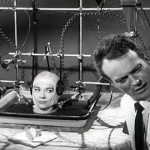
Dr. Cortner faces a similar dilemma to that of Dr. Genessier. In this case, it’s his fiancée, Jan, who desperately requires his medical skills. Poor Jan was decapitated in a car wreck, but clever Dr. Cortner finds a way to keep her head alive… sort of. Of course, being mounted on a liquid-filled tray isn’t much of a life, so the good doctor goes in search of a donor of a body from the neck down. Not too many of those get advertised on Craig’s List, unfortunately…
(10) Nurse Ratched from One Flew Over the Cuckoo’s Nest (1975)

Nurse Ratched may be the most subtle evil practitioner of medicine on this list. She doesn’t do anything overtly bad to any of the patients at the Oregon State Hospital; any accrediting auditor who would follow her around to observe quality of care would probably give her high marks for professionalism. Still, she drives one patient to suicide, maneuvers another into a lobotomy, and destroys the self-esteem of the whole lot. A career-making (and career-destroying) performance by Louise Fletcher, who won an Academy Award for Best Actress and became so associated with Nurse Ratched that she was never offered another role a tenth as good.
(9) Master George Sims from Bedlam (1946)

I had to get Boris Karloff on this list somehow. He played an entire platoon of mad doctors over his lengthy career, including a descendant of Dr. Victor Frankenstein in Frankenstein 1970. But I do believe the most evil doctor he portrayed was Master George Sims, who was based upon the real-life Dr. John Monro, chief physician of the infamous Bethlem Royal Hospital. Sims takes a sadistic delight in showing off the the peculiarities of his mental patients to any curious observers, and he is more than willing to abuse his legal powers and commit any critics of his practices to his asylum. Perhaps Nurse Ratched is a descendant?
(8) Dr. Caligari from The Cabinet of Dr. Caligari (1920)
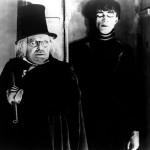
In this masterpiece of German Expressionist cinema, Dr. Caligari cruelly exploits a zombie-like somnambulist, Cesare, both to earn him an income as a carnival attraction and to murder the doctor’s enemies. The film’s twist ending (one of cinema’s first) deflates Caligari’s evil considerably; but for the first nine-tenths of the film, Werner Krauss’s mad hypnotist provides a lurid archetype for all the hundreds of mad doctors to follow.
(7) Dr. Robert Suzuki from The Manster (1959)
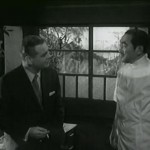
This Japanese-American co-production, an early example of tokusatsu (Japanese film or TV which relies heavily on special effects), probably shows up on nobody’s list of horror classics. But its mad doctor, Dr. Robert Suzuki, appears on this list at #7 because he is such a conniving manipulator and sneak. He pulls an awful stunt on American news correspondent Larry Stanford, who only means to do the doctor a favor by writing a puff piece on him; Dr. Suzuki slips him a mickey, knocks him out, and injects him in the neck with an experimental serum meant to chemically induce evolutionary change. Oh, but that isn’t all – once poor Larry wakes up, completely unaware his veins are full of monster-making juice, Dr. Suzuki butters him up, convincing him to stay in Japan longer than he’d planned (so the good doctor can observe the results of his work). He hooks Larry up with a voluptuous assistant, Tara, and wines and dines him after taking him to some swanky nightclubs and massage baths. Meanwhile, Larry is growing a second head on the side of his neck. Hope the sushi was worth it, Larry!
(6) Dr. Innes and Dr. Morris from Seconds (1966)
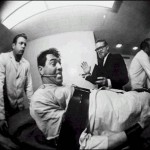
Talk about your bait-and-switch (and how appropriate, since we’re also talking Obamacare). All middle-aged sad-sack Arthur Hamilton wants is a chance at a new life. The doctor-entrepreneurs of The Company offer him just that: a brand-new life as Rock Hudson, following a few days’ worth of plastic surgery. What the poor shmuck doesn’t realize is how badly he’ll come to miss his old life. But once he’s signed on the dotted line, there’s no going back. As soon as he voices his displeasure too strongly, the docs and their orderlies put the hurt on him and disassemble him into fresh parts for new clients. Old Arthur didn’t read the small print at the bottom of that HIPAA release form…
(5) Dr. Christian Szell from Marathon Man (1976)
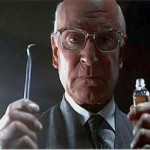
We need at least one Nazi dentist on this list, and Dr. Szell is it. Nobody who sees this movie will ever forget what Laurence Olivier’s Nazi war criminal dentist does inside Dustin Hoffman’s mouth. This film has probably been responsible for more dental care procrastination than any other movie in the history of cinema.
(4) Dr. William Michaels from The M.D.: A Horror Story (1992)

This horror novel by the extraordinarily gifted writer Thomas M. Disch hasn’t yet been adapted into a film, but it should be. Dr. Michaels is the possessor of a magical caduceus, a talisman he has owned since childhood. The caduceus is capable of miraculous feats of healing. But in order to do so, it must first be “charged” with the energies stemming from monstrous acts of evil. Dr. Michaels learns he enjoys using the caduceus for evil every bit as much as he does using it for healing. Perhaps even more…
(3) Dr. Moreau from Island of Lost Souls (1932)
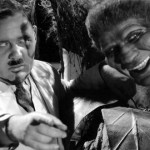
In this first film adaptation of H. G. Wells’s The Island of Dr. Moreau (1896), Charles Laughton’s Dr. Moreau has no redeeming qualities. Unlike Dr. Frankenstein, he does not seek to aid mankind. Unlike Doctors Genessier and Cortner, he isn’t trying to do a solid for a daughter or fiancée. His goal, it seems, is to bring more human beings into the world; but any twelve-year-old who has gone through a sex education class could tell him there are easier ways to do this than to vivisect hundreds of innocent, helpless animals. This is a man who would gladly cut up Bambi and Rin-Tin-Tin. That’s just evil.
(2) Dr. Elliot Mantle/Dr. Beverly Mantle from Dead Ringers (1988)
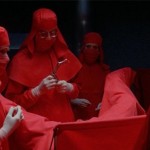
I am not easily creeped out by a movie. But this David Cronenberg flick about twin brother gynecologists did it for me. I nearly crawled out of my skin watching this. Couldn’t make it through to the end. They might not be the most evil doctors on this list, but the Doctors Mantle, with their eager application of medieval torture device gynecological instruments to Genevieve Bujold’s mutant lady-parts, are certainly the most unsettling of the bunch.
(1) Dr. Josef Mengele from The Boys from Brazil (1978)

And coming in at #1 is history’s most nefarious and infamous evil doctor, utilized by best-selling author Ira Levin as the villain of his 1976 science fiction thriller, made into a popular film two years later. In book and movie, Dr. Mengele wants to recreate his beloved Fuhrer through cloning, certainly evil enough to get him to the top of this list. My only misgiving about Mengele’s depiction here is the very odd casting of Gregory Peck. I mean, come on, who can believe that Atticus Finch is history’s greatest monster doctor? Laurence Olivier was in this one, too, but as a Nazi-hunter, this time. Maybe after his star-turn as evil dentist Dr. Szell two years earlier, he figured he’d done his quota of Nazi roles. Too bad.
So, there’s our list! Keep an eye out for these particular doctors and nurses. Obamacare promises to vastly increase the demand for medical care, but does nothing to increase the supply. So these thirteen paragons of mercy and healing may be called out of retirement… to staff an Obamacare clinic near you!
Friday Fun Links: Got Those Escaped-Dog Blues…
Feeling rather bummed out today. My dog, Romeo, an 85-lb fox hound, dumb as a box of bricks (but lovable), got out of the house three times yesterday. I caught him after his second escape when I pulled up to the house from the train station and found him loping towards me up the driveway. I put him back inside and slapped the invisible fence collar on him – the one that gives him a big ZAP! when he goes more than fifty feet away from the house. I’ve been trying to train him that, when the ZAP! collar is on him, he will get ZAPPED! When the ZAP! collar is NOT on him, and I have him on his regular leash, he will not get ZAPPED! The problem is, after a training session, he is terrified to go outside… whether the collar is on him or not. After about three days of being terrified, he forgets all about being ZAPPED! and is eager to escape again.
Well, wouldn’t you know it; the kids came home shortly after I got the collar on him and let him out of the house again. That big dummy loves tracking the scent of deer so much, he took off like a Saturn V rocket – and ran right through the electric fence, ZAP!-be-damned. He stayed away all night, when the temperatures were dropping close to freezing. Didn’t show up this morning. Hasn’t shown up during the first half of my workday.
What does this have to do with Superheroes-as-Manatees?
Absolutely nothing. But I came across the work of Joel Micah Harris while bumming around on the Internet and figured sharing my favorite mystery-manatee heroes with you might help alleviate my bummed-outedness. So here they are!
_______________________________________________________________________
_______________________________________________________________________
_______________________________________________________________________
If you’d like to see all the X-Manatees together, go here.
And here is Joel Micah Harris’ gallery on DeviantART, with lots more mystery-manatee heroes and plenty of other fun stuff.
UPDATE: According to Dara, Romeo has returned, safe and sound. So the mystery-manatee heroes have served their noble purpose.
Enviro-Irony: Fisker Karma Planet-Savers Resurrected as 638-HP Carbon-Spewing Monsters
Gaia worshippers, before you crawl into bed with government enablers and crony capitalists, be aware that the offspring of such intercourse, although cute and Earth-friendly when little, may grow up to be rebellious, Corvette engine-powered, supercharged enemies of the biosphere:
“VL Automotive, a Detroit venture backed by former General Motors’ vice chairman Bob Lutz, is moving ahead with plans to convert Fisker Karmas from hybrid power to Corvette power. … The converted Karma, to be called the Destino, has a more conservative grille and a few other minor cosmetic tweaks. VL Engineers are removing the Chevrolet Volt-like gasoline-electric powertrain and replacing it with the engine and transmission used in the Chevrolet Corvette. Two versions will be available, a base 450-hp direct-injected V-8 and an optional 638-hp supercharged V-8.”
This, on the heels of this disheartening news for the American taxpayer:
“An investor group led by Hong Kong tycoon Richard Li is the likely winner of a government loan owed by Fisker Automotive, the now-dormant maker of plug-in hybrid sports cars … The U.S. Department of Energy picked Li’s group after an auction held Friday to sell the green-energy loan. … Fisker does not have enough money to pay its outstanding bills and has not built a car in about 15 months. Fisker laid off most of its employees in April to save cash. The DOE said last month that it planned the auction after ‘exhausting any realistic possibility’ that it could recoup the entire amount still owed by Fisker. The exact value of Li’s bid was not immediately clear, but bidders had to offer at least $30 million to participate in the Fisker loan auction, sources have said. …
“In 2009, Fisker won a $529 million DOE loan under a U.S. program to promote green vehicles.”
I stumbled across the Fisker-DOE boondoggle one lunch hour in October, 2011 when the head honchos of Fisker and the Department of Energy did a press rollout of their new $108,900 hybrid gas-electric luxury performance sedan in front of a deluxe hotel across the street from my office building. My curiosity captured by a row of gorgeous 4-door Corvettes (what the Karmas looked like, and what they now will actually become), I wandered over to the event. I wasn’t at all happy to learn that my tax dollars were being “invested” in a start-up manufacturer of four-wheeled toys for the .0001% — particularly since such toys, advertised as planet-savers, burned high-octane gasoline at a rate of 20mpg after the first twenty miles following a charge-up. Here’s my take from back then, which I presciently called, “Fisker Karma: Solyndra on Wheels?” (turns out the question mark wasn’t necessary).
So now, two years later, the wheels have come off Fisker Automotive’s eco-friendly dream. Twenty-five of the cars Fisker managed to build before going under will have their batteries and hybrid powertrains ripped out in favor of two of the meanest, un-greenist V-8 powerplants ever unleashed onto the tarmac. Hundreds more of the mutant Karmas/Destinos will be built using spare body shells and interiors left over from the now-dismembered manufacturing firm. Meanwhile, the American taxpayer takes it on the chin, yet again, as the crony capitalists get their bail-outs.
One more tantalizing tidbit from that Automotive News article:
“VL is further planning to offer current Karma owners the option to convert their cars to Corvette power for about $100,000, provided the Karma is in pristine condition. Fisker sold about 1,800 Karmas before production stopped in November of last year when the company ran out of money.”
If memory serves, Al Gore and Leonardo DiCaprio both bought Fisker Karmas back in the company’s pre-bankruptcy salad days of 2011. Might these two eco-titans consider ditching their girly-man cars’ underwhelming hybrid powertrains for a heaping helping of hairy-chested, old-fashioned American V-8 muscle?
As Darth V-8der might say…
“Come over to the dark side. Join me, and together, we can rule the American Road as father and son! Luke, it is your Destino!”






